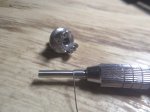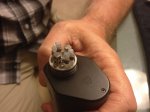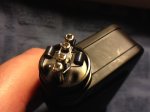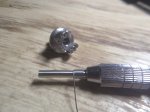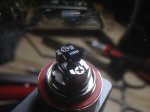Hello,
I quit vaping for the last 5 years. As expected I need little help because of all this new information/products on the market.
My setup for now is Evic VTwo mini with Zephyrus 2 tank and 1.8 Ohm (10-13W) tank. I vape 0.6 to 0.9 nicotine juice.
I really want to try the RBA on the Zephyrus 2. With all those new coil types, wicks and so on I cant really decide what to try.
Can you suggest basic first build configuration. For example what wire to use, how thick, what resistance, single or double coil, what cotton and so on. Im searching for a pretty simple build in order to start from somewhere.
Thank you.
Sent from my iPhone using Tapatalk
I quit vaping for the last 5 years. As expected I need little help because of all this new information/products on the market.
My setup for now is Evic VTwo mini with Zephyrus 2 tank and 1.8 Ohm (10-13W) tank. I vape 0.6 to 0.9 nicotine juice.
I really want to try the RBA on the Zephyrus 2. With all those new coil types, wicks and so on I cant really decide what to try.
Can you suggest basic first build configuration. For example what wire to use, how thick, what resistance, single or double coil, what cotton and so on. Im searching for a pretty simple build in order to start from somewhere.
Thank you.
Sent from my iPhone using Tapatalk

